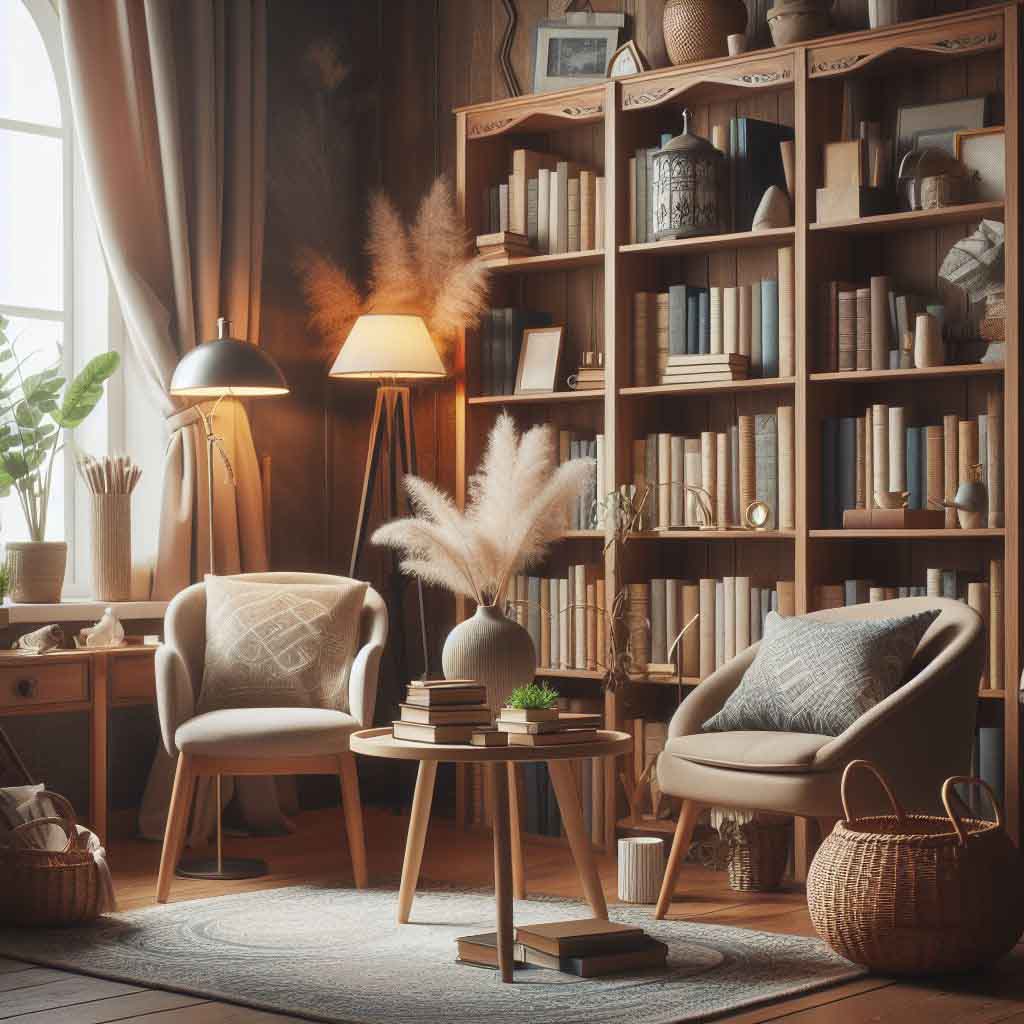In a world saturated with digital technologies, bringing comfort into our homes has become an integral part of daily life. One way to enhance the coziness and enrich the home atmosphere is by creating a personal home library. This project not only adds style to your home but also establishes a unique space where you can immerse yourself in the world of books and knowledge. Let's explore several key steps to set up your home library.
Choosing the right space
The first step in creating a home library is choosing the appropriate location. This could be a corner in the living room, a study, or even a separate room if space allows. In smaller living spaces like private houses or townhouses, utilizing the space under the staircase is a practical and often underutilized option. When selecting the space, consider the planned furniture as well. Elegant bookshelves or cabinets are excellent for organizing books and giving your library a sophisticated look without cluttering the room.
Organization and storage of books
Efficient organization of books is a crucial aspect of a home library. Plan the arrangement of books by genres, authors, or alphabetically to simplify finding a specific book and make your library more functional. Do not forget to allocate space for future acquisitions. Additionally, consider planning the placement of books by size and format.
If your library houses many large-format albums, consider installing pullout shelves reminiscent of a secretary desk. This facilitates access and allows for convenient page flipping, considering the impracticality of holding heavy folios by hand. The recommended shelf depth for a library is no more than 35–40 cm to discourage placing books in two rows. Professional storage systems often feature deeper lower shelves designed for large-format albums, while narrower upper shelves accommodate other literature.
When choosing a storage system, ensure it can bear the weight of books with a reserve for future additions. An integral part of the library's design is the inclusion of stepladders. Ideally, if the shelves reach the ceiling, making them capacious and aesthetically pleasing. Transformable ladders that also function as chairs are excellent choices. However, for ceiling heights exceeding three meters, stationary constructions, preferably anchored to the shelves themselves, may be required.
The debate between glass and open shelves is subjective. Glass minimizes dust accumulation, yet visually and psychologically may seem less accessible. When opting for glazed storage systems, consider sliding doors as the most convenient option, disappearing into horizontal slots on the shelves.
Lighting and decor: cozy reading nooks
Lighting plays a crucial role in setting the atmosphere. Consider adding table lamps or shelf lighting for your bookshelves. Explore the option of large windows to let natural light flood the space.
In libraries, artificial lighting is often preferred over natural light to protect books from the potentially damaging effects of bright sunlight (ultraviolet). However, to preserve vision, it is essential to provide both general and local lighting, utilizing multiple light sources.
Decorative elements such as paintings, sculptures, or plants give the library a unique touch. An aquarium with fish can add coziness and tranquility. Create comfortable reading zones by adding a cozy chair or sofa, soft pillows, and a plush rug. These elements not only add style to the library but also create the perfect atmosphere for solitary reading.
To add sophistication to the interior, use bookshelves as expressive elements by placing not only books but also souvenirs, framed photos, and artificial objects like paintings and sculptures. If you collect items such as figurines, seashells, vintage ornaments, or memorable souvenirs, proudly display them on the shelves. Follow the important rule: mix and match various items — there is no need to designate separate spaces for albums, photos, etc. Place everything together.
Technological innovations
Integrate technologies to enhance the reading experience. E-books, audiobooks, and smart reading lights can modernize and add functionality to your library.
Here are some technological innovations that have transformed the appearance of home libraries:
Smart bookshelves
Smart bookshelves have turned ordinary shelves into interactive spaces. They can automatically organize books, illuminate desired sections, and even connect to the internet to search for additional information about books.
Audiobooks and content subscriptions
Modern home libraries are not limited to printed books. Audiobooks have become a popular way to consume literature, allowing you to listen to books at any time. Content subscriptions provide access to rich libraries of works without the physical presence of books on the shelves.
Virtual and augmented reality
Virtual and augmented reality technologies are making their way into the world of reading. Users can immerse themselves in virtual libraries, interact with book characters, or even reinterpret the plot using visual effects.
Interactive screens and touch technologies
Interactive screens placed on shelves or walls allow users to access additional information about books, authors, or historical contexts. Touch technologies provide convenient control over lighting, audio systems, or even electronic devices right from the library corner.
Built-in audio and video systems
Home libraries are becoming places for a multimedia reading experience. Built-in audio and video systems enable the listening of audiobooks, watching author lectures, or creating an atmosphere that corresponds to the content of the book.
Organizing your workspace
If you plan to use your library not only for reading but also for work, create a comfortable workspace by adding a desk, chair, and necessary accessories. Choose a desk of the appropriate size that meets your needs, ensuring it blends seamlessly with the interior and offers ample space. Select a comfortable chair with proper back support as ergonomics play a crucial role in maintaining comfort throughout the workday. Arrange your computer or laptop to not only fulfill your work requirements but also complement the library's design. Ensure there are enough outlets for all your devices and plan for organized charging stations. Pay attention to cable management; utilize special holders to avoid clutter.
Events and cultural evenings
Do not forget to use your library for hosting events. Book clubs, lectures, or tea evenings will add a social dimension to your library, creating a cozy space for socializing. Creating a home library is an engaging process that not only adds uniqueness to your home but also establishes an ideal place for comfort, learning, and relaxation. Infuse your personality into the project, and your library will become an integral part of your home.
Creating a home library is a captivating journey that not only adds a unique touch to your residence but also establishes an ideal space for relaxation, learning, and introspection. Infuse your individuality into the project, and your library will become an integral part of your home.



